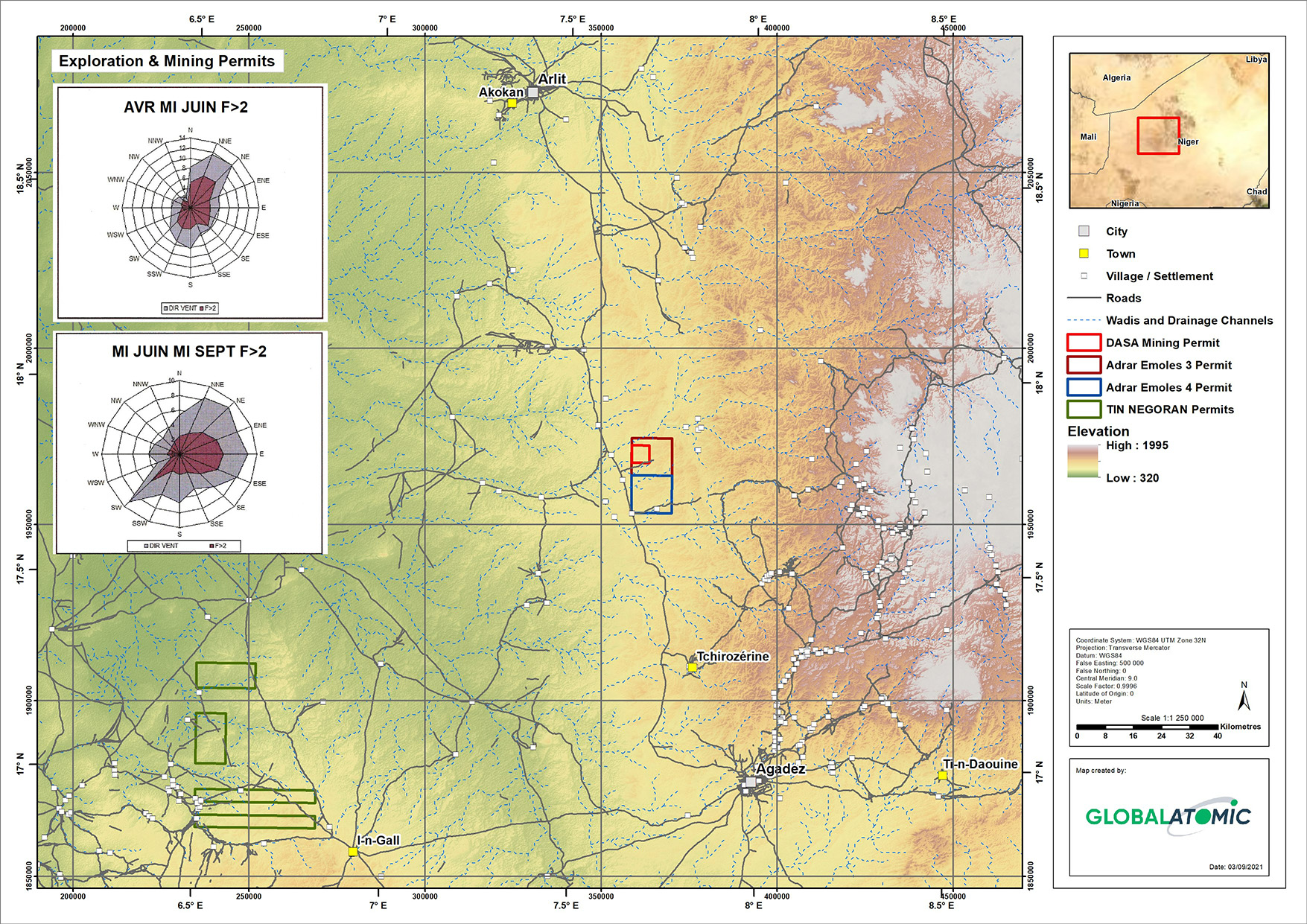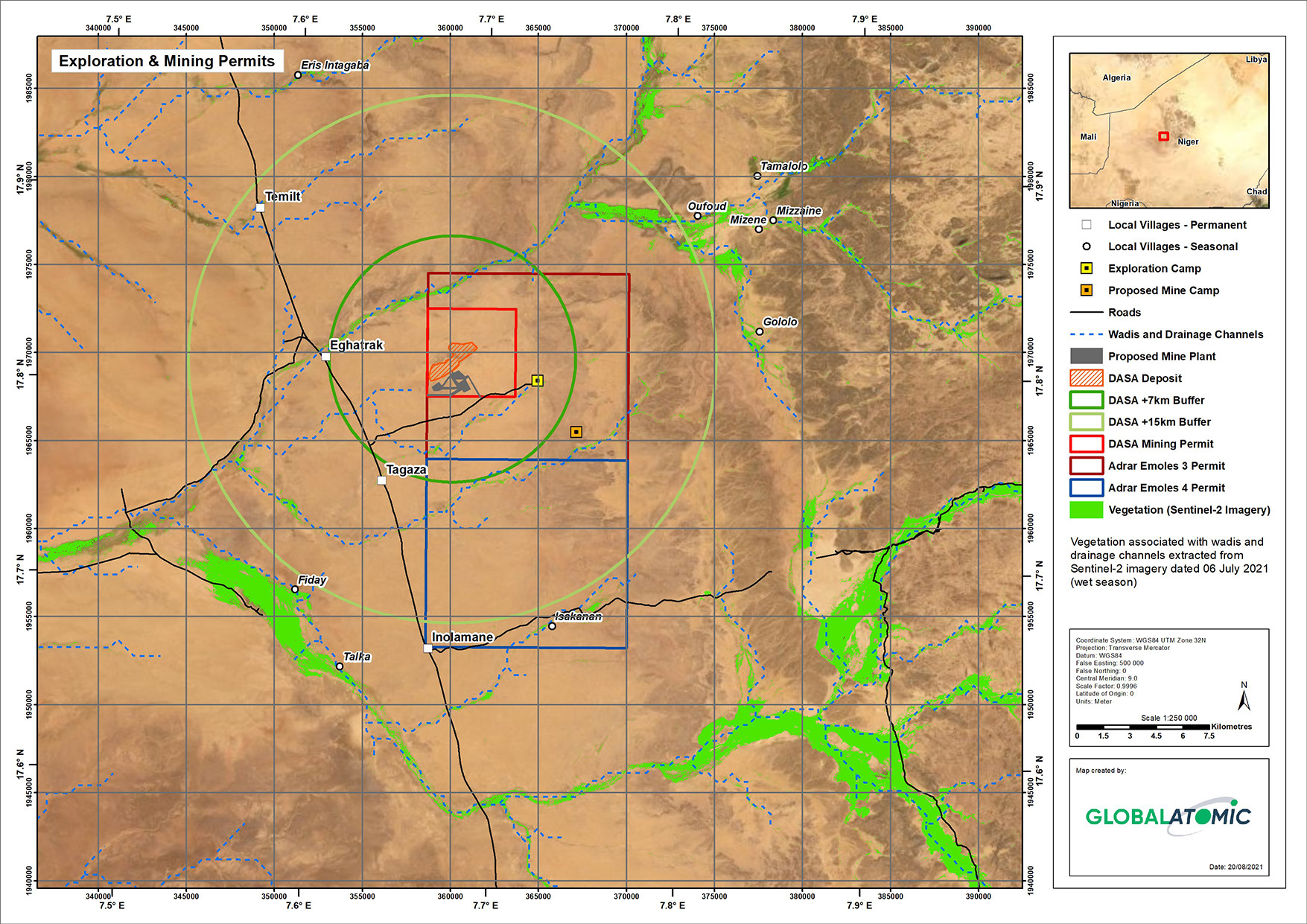environmental monitoring
The Dasa Project is located within a largely uninhabited region characterized by nomadic villages and three small towns located on the highway east of the Project area that links the regional towns of Arlit 105 km to the north and Tchirozerine 60 km and Agadez 95 km respectively to the south.

Villages proximal to the 7 km perimeter are inhabited on a seasonal basis in support of nomadic livestock herding and seasonal farming referred to as “market gardening” within and proximal to the koris (ephemeral watercourses) where water is available on a seasonal basis. The towns of Tagaza and Egatrak are on or proximal to the 7 km perimeter and located on the Agadez – Arlit Highway.

A desktop study of the Project and surrounding areas was recently completed in accordance with the requirements of the International Finance Corporation’s Performance Standard 6 (IFC PS6). The purpose of the desktop study was to identify biodiversity features of interest and conduct critical habitat (CH) and species of conservation concern (SoCC) screening and inform on-going biodiversity field work.
The previous ECS and ESIA identified a limited number of biodiversity features of interest including Protected Areas in the region, species which may be present in the Project area and habitats / vegetation known to occur.
The desktop study employed the Integrated Biodiversity Assessment Tool (IBAT) to procure both an IBAT report for the Project Area and to download IBAT GIS data for Protected Areas. GIS data included the World Database of Protected Areas (WDPA), Key Biodiversity Areas (KBA), IUCN Species Ranges (for Critically Endangered (CR), Endangered (EN) and Vulnerable (VU) species), a review of UNESCO World Heritage Sites, Man and Biosphere (MAB) Reserves, Ramsar Wetland sites, the UNEP Global Critical Habitat screening layer and a review of IUCN Red list species based on IBAT results. Several Protected Areas were identified through reference to the above data bases however none of them overlap the Project Area.
A Critical Habitat screening was carried out in accordance with PS6 to identify biodiversity features that might potentially meet the CH criteria and thresholds. A Landscape Study Area (LSA) was identified to include the Dasa mining project location and a 50 km buffer around it. More detailed screening was then undertaken within a more localised study area (the Dasa mining project location with a 15 km buffer).
Twenty-four species of conservation concern have been identified as potential CH qualifying features based on the limited habitat and site-specific information currently available for the LSA. Of these, 13 species have been conservatively classified as “may occur” and 11 species are considered “unlikely to occur” with a higher degree of confidence. Three wide-ranging/nomadic mammals: North-west African Cheetah (Acinonyx jubatus ssp. hecki), Addax (Addax nasomaculatus) and Dama Gazelle (Gazella dama/ Nanger dama), have the potential to qualify the landscape study area as Critical Habitat under Criterion 1 (Critically Endangered and Endangered species).
Previous project reports did not confirm the presence of threatened flora or fauna species or areas of Natural or Modified Habitat within the landscape study area. However, to align with IFC PS6 guidelines, a local environmental consultancy group has been commissioned to conduct further field assessment and habitat mapping focused on the biodiversity features identified in the Critical Habitat Desktop Study.
